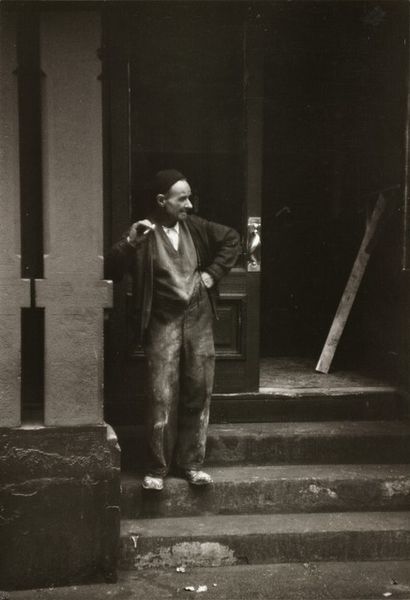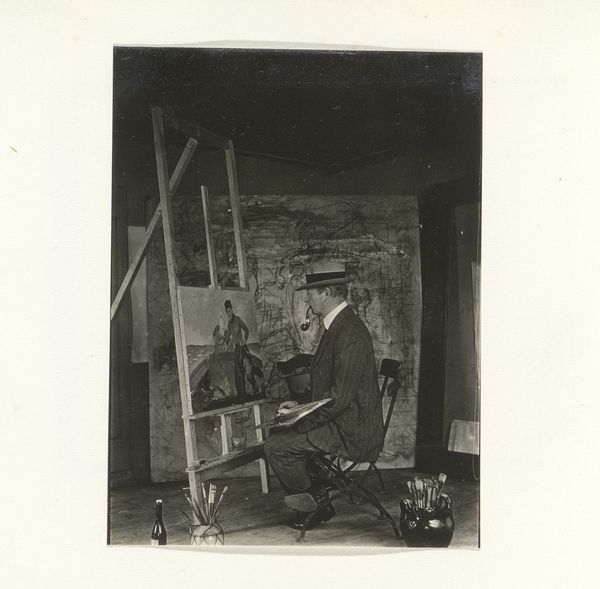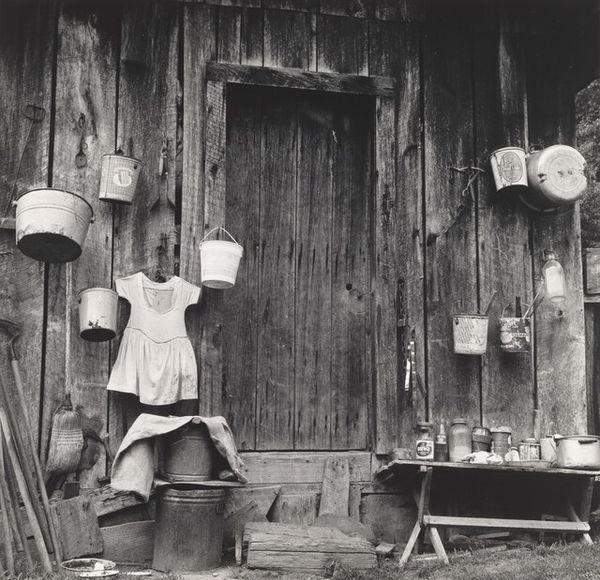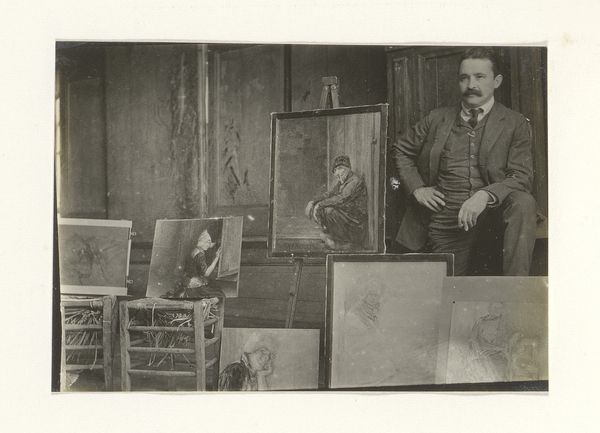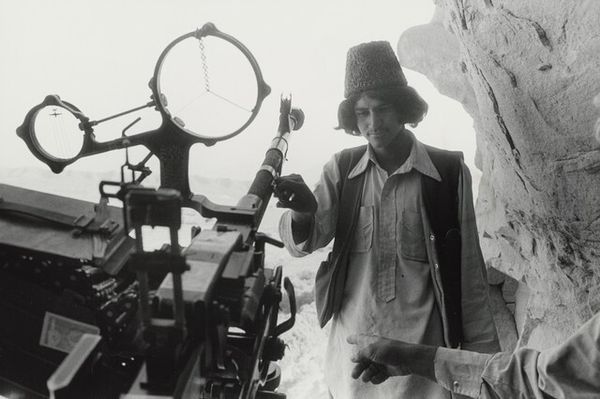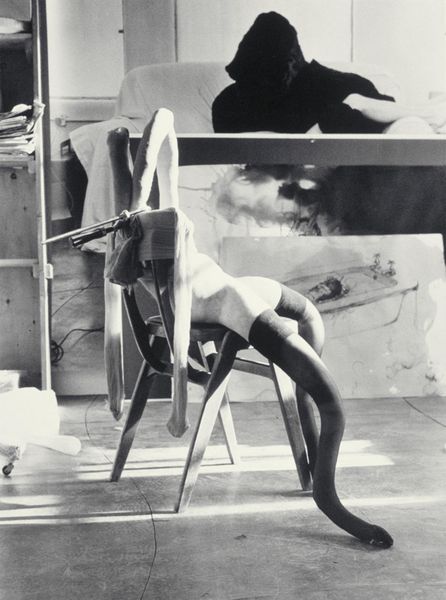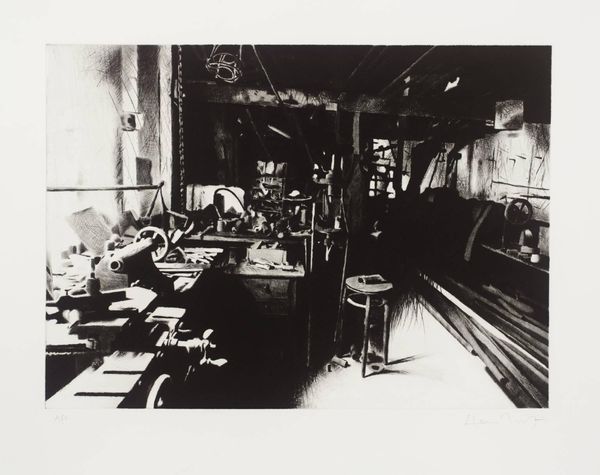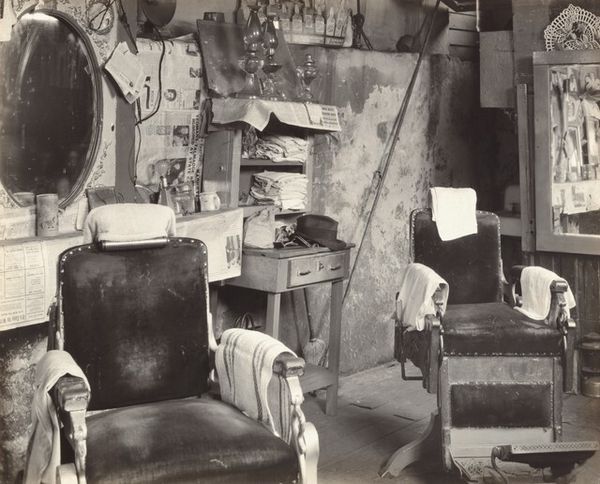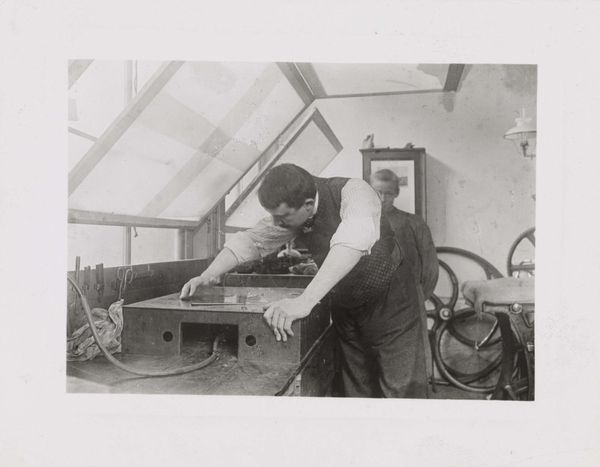
photography, gelatin-silver-print
#
portrait
#
asian-art
#
social-realism
#
photography
#
gelatin-silver-print
#
realism
Dimensions: image: 35.3 × 23.5 cm (13 7/8 × 9 1/4 in.) sheet: 35.3 × 27.9 cm (13 7/8 × 11 in.)
Copyright: National Gallery of Art: CC0 1.0
Curator: Inge Morath’s gelatin silver print, “Young Man, China” from 1978, captures a specific moment and aesthetic sensibility of post-Cultural Revolution China. Editor: The atmosphere strikes me immediately –somber and almost austere. It's a stark image. The grey tones feel incredibly raw, like the room itself. Curator: Well, let's consider that rawness. Morath’s choice of gelatin silver, combined with her specific developing techniques, allows for sharp contrasts that highlight the textures: the rough plaster, the aged tools, and the plain clothes worn by the young man. The print itself becomes a physical object that embodies this aesthetic, documenting work conditions through sharp realism. Editor: I see your point. And the context of 1978, shortly after the Cultural Revolution's end, is crucial. The photo, taken during a time of significant sociopolitical change, shows not grand political gestures, but rather an everyday working man against this backdrop of the physical labour in carpentry. Curator: Precisely. It prompts questions about labor and material culture. What was the role of craftsmanship and making during that period of transition? How were those values negotiated and portrayed publicly? This isn’t a portrait of individual genius. Editor: The tools themselves, so prominently displayed, feel less about the craft and more about…well, a specific vision of the proletarian worker in service of state ideals. Were images like these encouraged or at least circulated as propaganda? Curator: It certainly touches on that, yes. There are nuances here. On one hand, it clearly embodies the social realist aesthetic valued at the time—idealizing workers but also showing them plainly, unadorned. At the same time, I believe Morath infuses the image with genuine respect. It becomes an ambiguous and rich moment in that specific history. Editor: That interplay between the image's propagandistic potential and the actual humanity Morath captures does add layers. It leaves one considering not only the materials at play – the wood, the silver, the photographic paper – but also the more ethereal materials like state ideology and individual identity. Curator: Indeed. Ultimately, it urges us to critically engage with the politics inherent to image-making, but also the power photography holds to present authentic human representation under difficult political constraints.
Comments
No comments
Be the first to comment and join the conversation on the ultimate creative platform.
